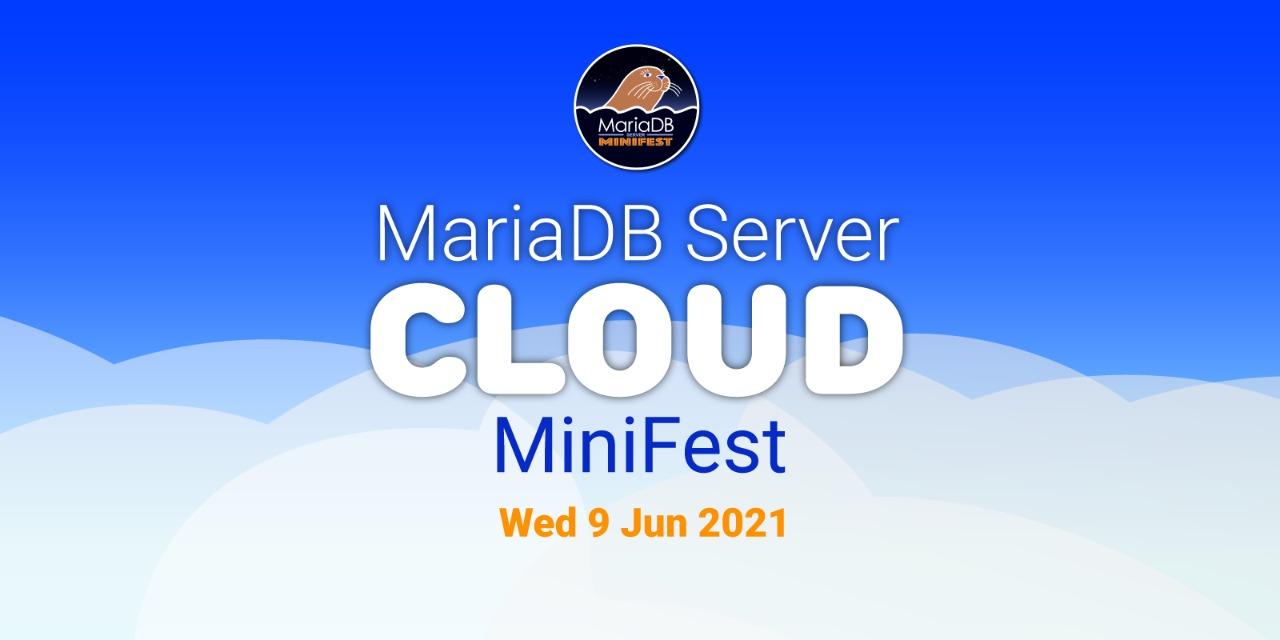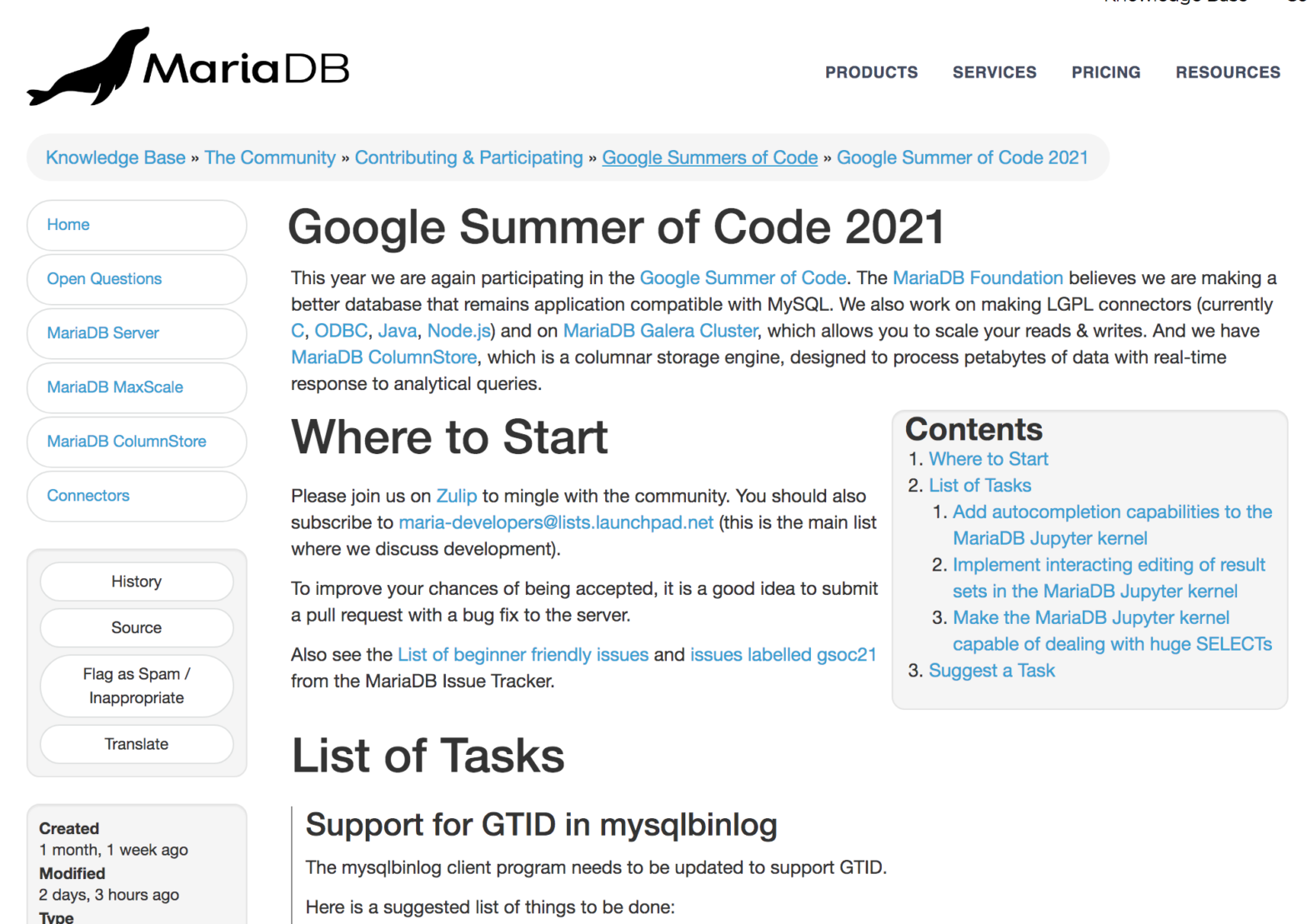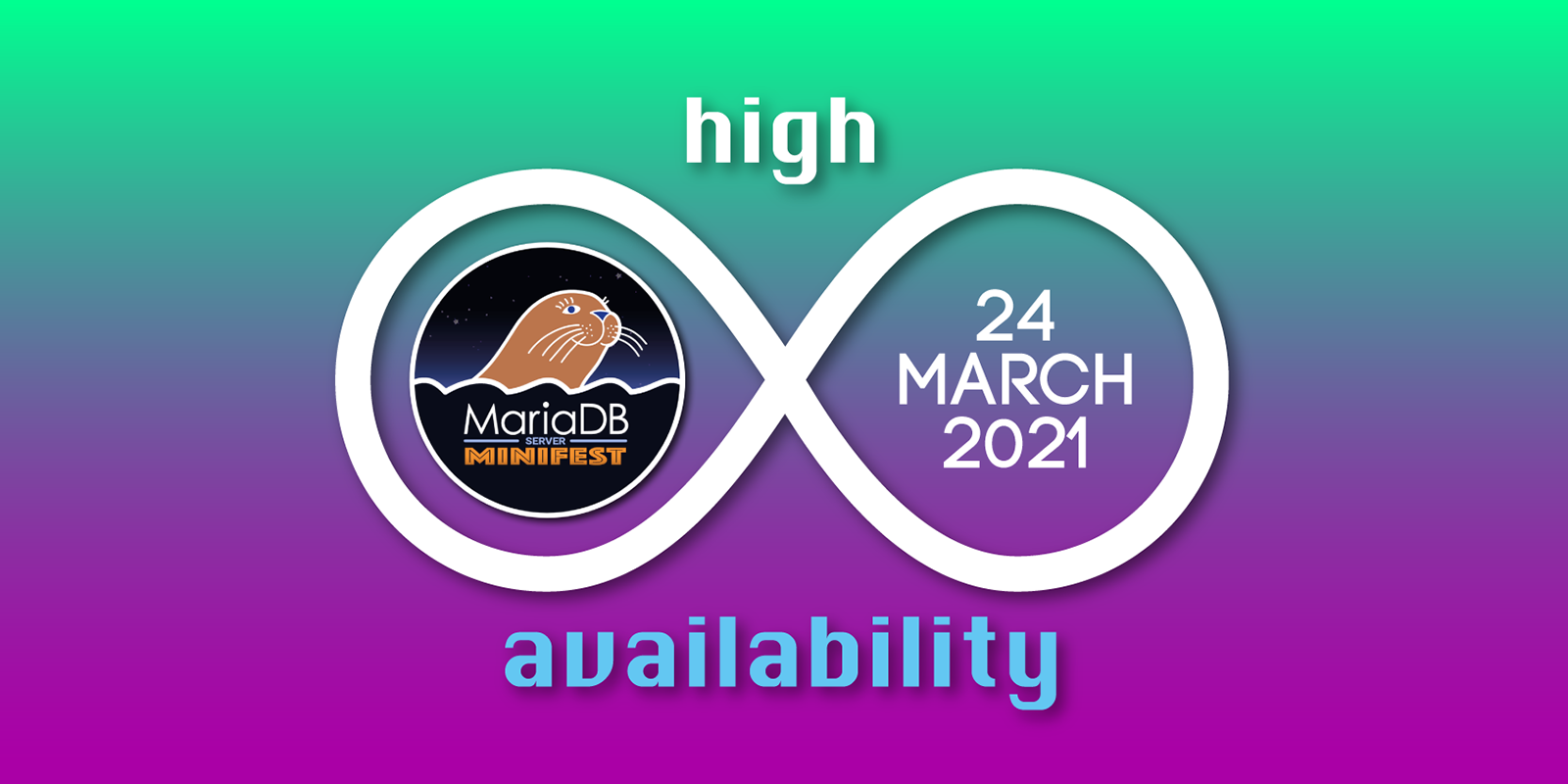Author Archives: Kaj Arnö
At the MariaDB Foundation, we want MariaDB Server to be a model citizen in the Open Source world. For now, there is a sizeable gap between dreams and reality. But that doesn’t stop us from striving to improve. Let me here describe some of our challenges, and share some visions of where we want to be.
Continuous Integration
One pain point is the state of the development tree. A model citizen would ensure that the tree can always be built. Every day, all the features under development could be tested by the community, on all platforms.
…
Continue reading “Challenges and Visions for MariaDB Server”
Update: MariaDB Server Fest 2021 will be held on the 5th and 6th of October 2021. You can find more information in this blog post.
Mark your calendars! Register for the MariaDB Server Fest 2021 in September. This year’s edition of our online conference has now got a time (Tue-Wed 21-22 Sep 2021) and a place (the web, like last year).
And, attention all potential presenters: We have just opened our Call for Papers.
…
Time for another MariaDB Server MiniFest! It will be on Wednesday 9 June 2021, so do mark your calendars. Our topic is the MariaDB in the Cloud. Again, we have a number of high-profile presenters lined up, to present the various cloud solutions for MariaDB. Our goal: to help you better navigate the skies.
Role models: The Server Minifests in Dec 2020, Mar 2021
The Cloud MiniFest follows the format of our Dec 2020 MariaDB Server MiniFest on the Release Policy and the Mar 2021
…
Good news, for you and for us: We have been approved for this year’s edition of Google Summer of Code!
What is Google Summer of Code?
Quoting https://en.wikipedia.org/wiki/Google_Summer_of_Code:
The Google Summer of Code, often abbreviated to GSoC, is an international annual program in which Google awards stipends to students who successfully complete a free and open-source software coding project during the summer. The program is open to university students aged 18 or over. It was first held from May to August 2005.
…
Introducing the MariaDB Community Room
Good news: At Percona Live Wed-Thu 12-13 May 2021, there will be a separate track for MariaDB. It’s called the MariaDB Community Room. Matt Yonkovit and Bronwyn Campbell of Percona tell us they have some changes in store for this year’s online-only edition, one of them being a more clear distinction of tracks. This is good news for the users of MariaDB Server.
MariaDB in the General Track vs MariaDB Room
There will be some MariaDB related presentations in the general track, on topics of general interest to all audiences.
…
Continue reading “Percona Live Online – MariaDB Call for Papers”
Mark your calendar on Wednesday 24 March 2021! Topic: the MariaDB Server MiniFest on High Availability. We have a number of high-profile presenters already lined up, to present the various HA solutions in MariaDB. Our goal: to help you pick the best one.
Role model: The Server Minifest in Dec 2020
The HA MiniFest follows the format of our Dec 2020 MariaDB Server MiniFest on the Release Policy. We start at 14:00 Paris time (CET) – 9:00am New York, 21:00 Beijing.
…
You can take FOSDEM out of Brussels, but you cannot take the Brussels out of FOSDEM. Meeting virtually is different, but FOSDEM once again succeeded in invigorating spirits and building bonds between developers.
Picture on top: myself “at FOSDEM” 2021. Missing the crowds, but still getting interaction!
Presentations now live on YouTube
The MariaDB presenters, the MariaDB Devroom organising committee and the team at MariaDB Foundation put considerable effort into all MariaDB talks at FOSDEM. The 24 MariaDB related talks are now all available on-line as a YouTube playlist on https://www.youtube.com/playlist?list=PLaJ5BwLUdDZ-JQME9xbO2UD3uvBXnizM1
Still friends with MySQL
MariaDB Foundation got its first-ever devroom just for MariaDB Server.
…
Our first poll is your chance to influence how MariaDB Foundation thinks about where we should focus our limited resources. What is most important for you: that we increase our efforts in fixing bugs? That we take the existing features, and make them faster? That we take the existing features, and make them easier to use? Or that we develop new functionality?
Rate each of the four items with up to five stars!
…





